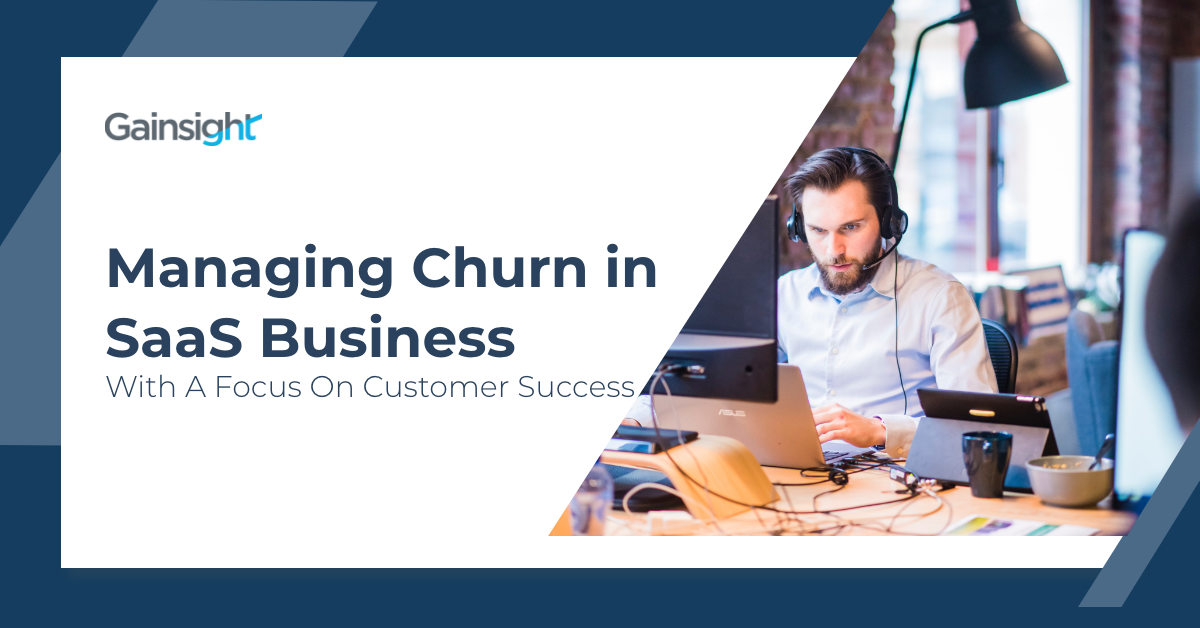This post was co-authored by Jake Tauscher.
Churn (the amount of revenue lost from a company’s existing customer base each year) is a metric that rises to the top of most SaaS leaders’ minds; it is one of the most commonly tracked metrics in SaaS businesses.
As a SaaS leader, some elements of churn are structural. However, there are also decisions you can make that affect churn. We recently interviewed ~50 leaders at mid-sized SaaS companies, to identify decisions they made that did or did not affect churn. Specifically, we focused on decisions concerning the ‘Customer Success’ function.
Why is Customer Success a key piece of the puzzle?
Customer Success (CS) is a function found in many SaaS businesses that is responsible for ensuring that customers are driving better business outcomes when they use the company’s products. Said another way, it ensures that customers experience success because they use the product – hence the name. Crucially, it is often the function that owns churn! In fact, in over 2/3 of the companies we interviewed, churn was a key performance metric for a frontline Customer Success Manager.
Therefore, it should follow that decisions made about the Customer Success function affect churn, and that is indeed what we saw in the data.
The Importance of Churn
First, our research showed that high-growth SaaS businesses have lower churn.
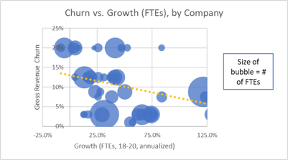
As seen in the graph above, we observed a distinct correlation between higher growth and lower churn. But does this imply that reduced churn causes higher growth? Or that higher growth causes reduced churn?
The true answer is likely somewhere in the middle, with each affecting the other (and many business decisions, such as investing in product capabilities, improving both). But, the most successful growers in our sample generally also have low churn.
Business Model Impact on Churn
Large Customers and Large Contracts predict Lower Churn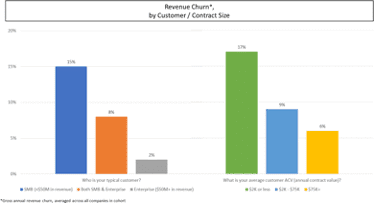
Companies that served larger customers ($50M+ in revenue) with larger contracts ($75K+ annually) experienced lower revenue churn.
Does this mean that these businesses are inherently superior? Of course not. Many successful businesses have been built serving SMBs. However, entrepreneurs and SaaS business leaders should think carefully about the type of customers and contracts they serve, and the resulting financial impact of these structural choices on their business.
Customer Success Impact on Churn
So, SaaS business leaders should be motivated to reduce churn and cognizant of the effect their business model has on expected churn.
But, what then? Well, there are several choices that Customer Success leaders can make that predicted lower churn in our data set.
Responsibility for ‘collections’ predicts higher churn
Differences in Customer Success Manager responsibilities could impact churn.
For example, we found that Customer Success Managers that were not asked to handle collections (i.e. following up on past due bills) had a 10% lower churn, on average than those companies in which CSMs carried this responsibility.
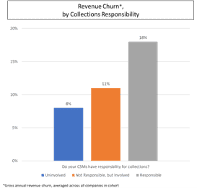
We hypothesize that this relationship could be driven by two factors. First, these are activities that consume the time and attention of the CSM, away from other (potentially more valuable) work. Second, these activities may harm the relationship the CSM has with the customer.
SaaS leaders should thoughtfully examine the scope of responsibilities of their CSMs in order to determine whether certain responsibilities are better handled by different departments.
Data-driven investment in CS predicts lower churn
Companies that had a ‘CS Ops’ function and used CS-specific software tools also had lower churn. This reflects a prioritization of data in the Customer Success process, possibly allowing companies to prioritize and manage customer interactions more efficiently.
CS Ops typically comprises data specialists, who manage software tools and create scalable programs to prioritize customer outreach and proactively identify customer issues. Many CS leaders sang the praises of CS Ops. As one CS leader told us “this is my favorite position in CS. Often the least invested in portion of CS, but it is hugely impactful in driving standardization and scalability.”
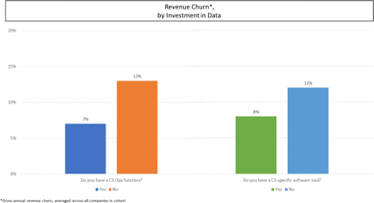
CS specific software tools were most often tools that helped track customer health and prioritize outreach to the right customers at the right time. We saw that these tools were helpful in lowering churn, but surprisingly, most CS Leaders did not feel that their software tools met all their needs! It could be that this lowered churn does not necessarily reflect the quality of the tools, but rather, reflect benefits from the approach needed to install a tool (e.g. cleaning data, identifying key metrics, etc.).
Larger CS organizations do not necessarily have lower churn
Interestingly, one decision that did not seem to predict churn was the size of the Customer Success org. As can be seen from the graph below, there is no observable correlation, either positive or negative, between churn and the percent of the company’s employees that are in CSM roles.
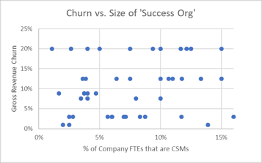
On the one hand, this seems negative for CSM teams. Shouldn’t more CSMs drive lower churn? After all, that’s their job! But perhaps there is another explanation for this. Companies with high churn rates might be more likely to hire large CSM teams. So, it could be a testament to the success of those CSMs in reducing churn that there is not an observable correlation.
Taken with the prior section, though, this suggests to us that SaaS leaders should consider building out the capabilities of their CS team before increasing the size of those teams.
Charging for customer success did not predict churn
A final factor that had very little correlation to churn was the decision to charge for Customer Success, as seen below.
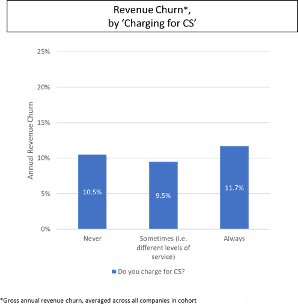
Paradoxically, charging for CS is often seen as a method to reduce churn in the industry. If it is not accomplishing this, it might be worth reexamining the decision, especially considering the expense of more friction in the sales process.
Concluding Thoughts
Managing churn is one of the essential activities of any SaaS business, and a strong Customer Success function is one of the tools that modern SaaS leaders have at their disposal. Our research suggests that by thoughtfully empowering the CS team to focus on value-added activities, and providing strong data support, SaaS companies could reduce churn and boost business outcomes.
